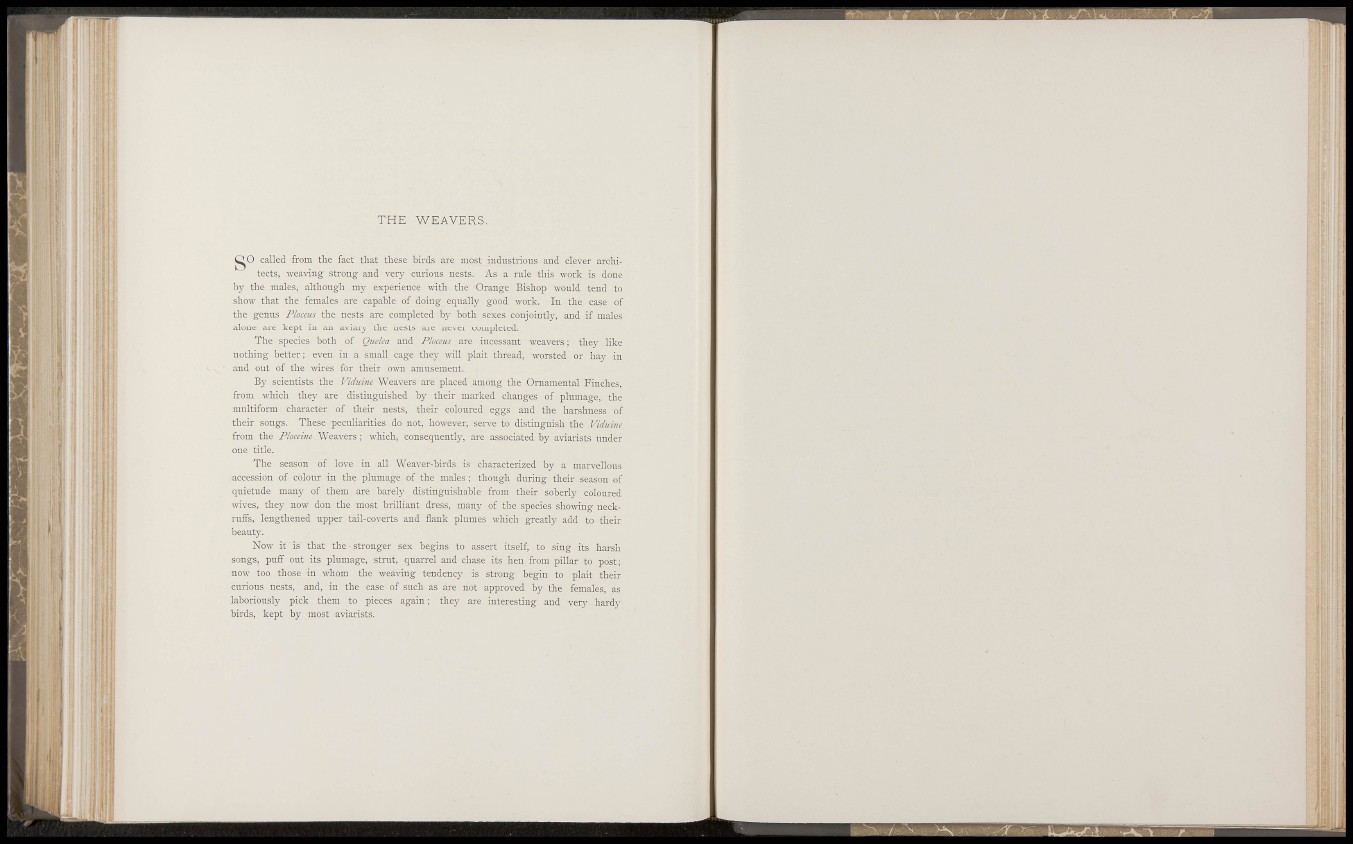
. ' -m; I
1 iii-ii,
^ f i :
: -
i
II It • .
•m
m
riii'
I
I ;'!
'I
I ,, i
li, i
, ^Vi
I ' l l
i l
Î
;
'f
It
I
ti
-li
' Ï
. I f
T H E WEAVERS.
called from tlie fact that these birds are most industrious and clever architects,
weaving strong and verjr curious nests. As a rule this work is done
by the males, although my experience with the Orange Bishop would tend to
show that the females are capable of doing equally good work. In the case of
the genus Ploceus the nests are completed bj' both sexes conjoint^, and if males
alone are kept in an aviar}- the nests are never completed.
The species both of Queha and Ploceus are incessant weavers ; they like
nothing better ; even in a small cage thejr will plait thread, worsted or hay in
and out of the wires for their own amusement.
By scientists the Viduine Weavers are placed among the Ornamental Finches,
from which they are distinguished by their marked changes of plumage, the
multiform character of their nests, their coloured eggs and the harshness of
their songs. These peculiarities do not, however, sen.re to distinguish the Viduine
from the Ploceiiie AVeavers ; which, conseqnentl}-, are associated by aviarists under
one title.
The season of love in all Weaver-birds is characterized by a marvellous
accession of colour in the plumage of the males ; though during their season of
quietude many of them are barely distinguishable from their soberly coloured
wives, they now don the most brilliant dress, many of the species showing neckruffs,
lengthened upper tail-coverts and flank plumes which greatly add to their
beauty.
Now it is that the stronger sex begins to assert itself, to sing its harsh
songs, puff out its plumage, strut, quarrel and chase its hen from pillar to post;
now too those in whom the weaving tendency is strong begin to plait their
curious nests, and, in the case of such as are not approved by the females, as
laboriously pick them to pieces again ; they are interesting and very hard}-
birds, kept by most aviarists.
i iM , i't'-'